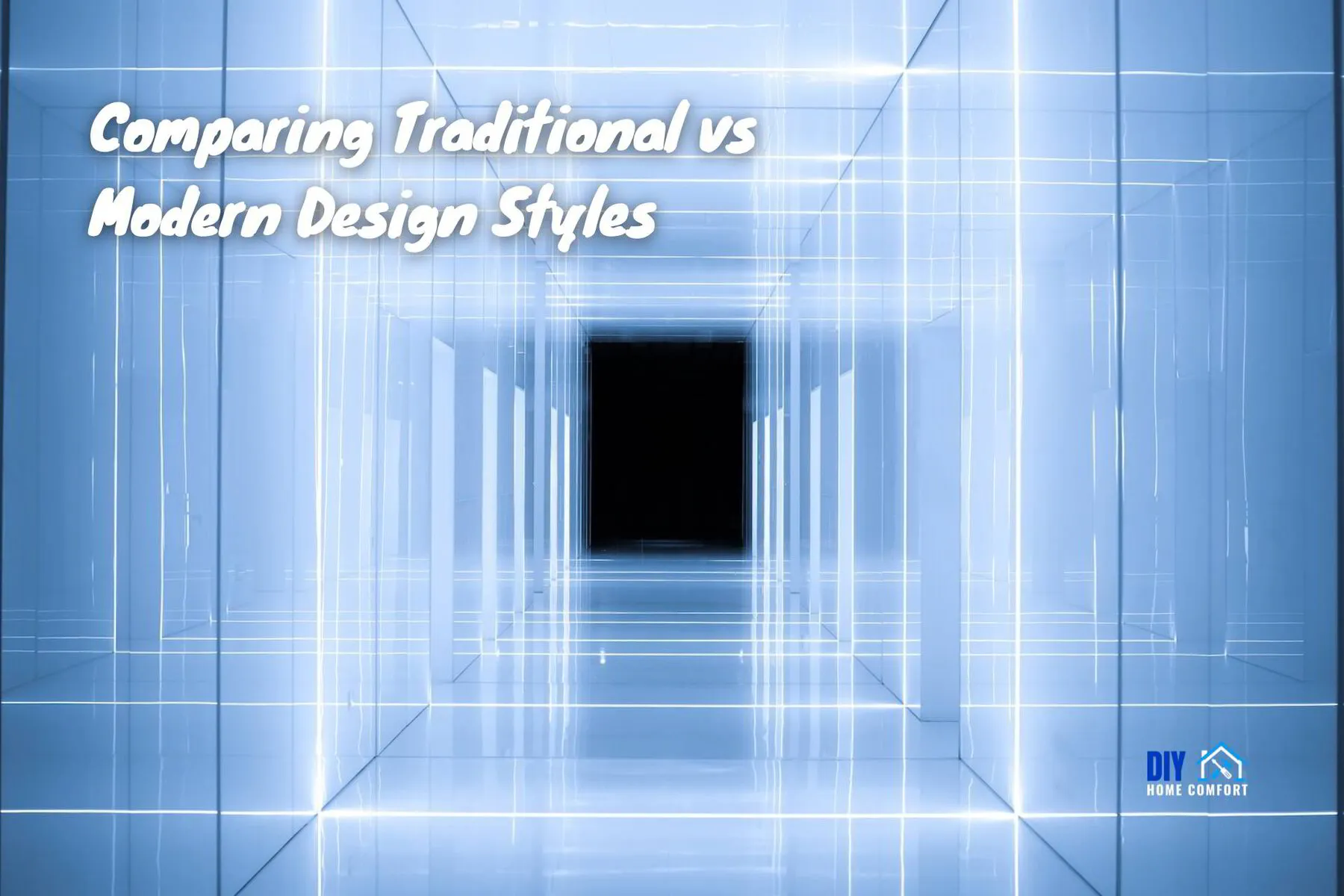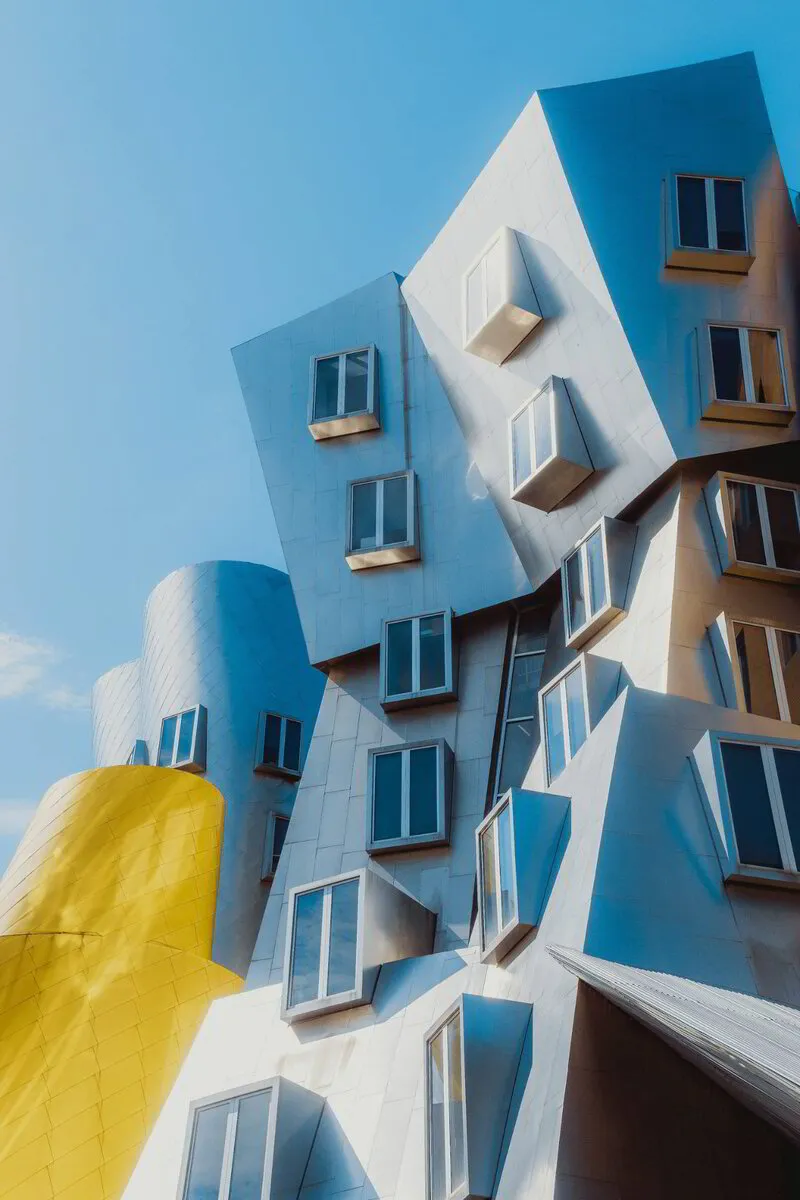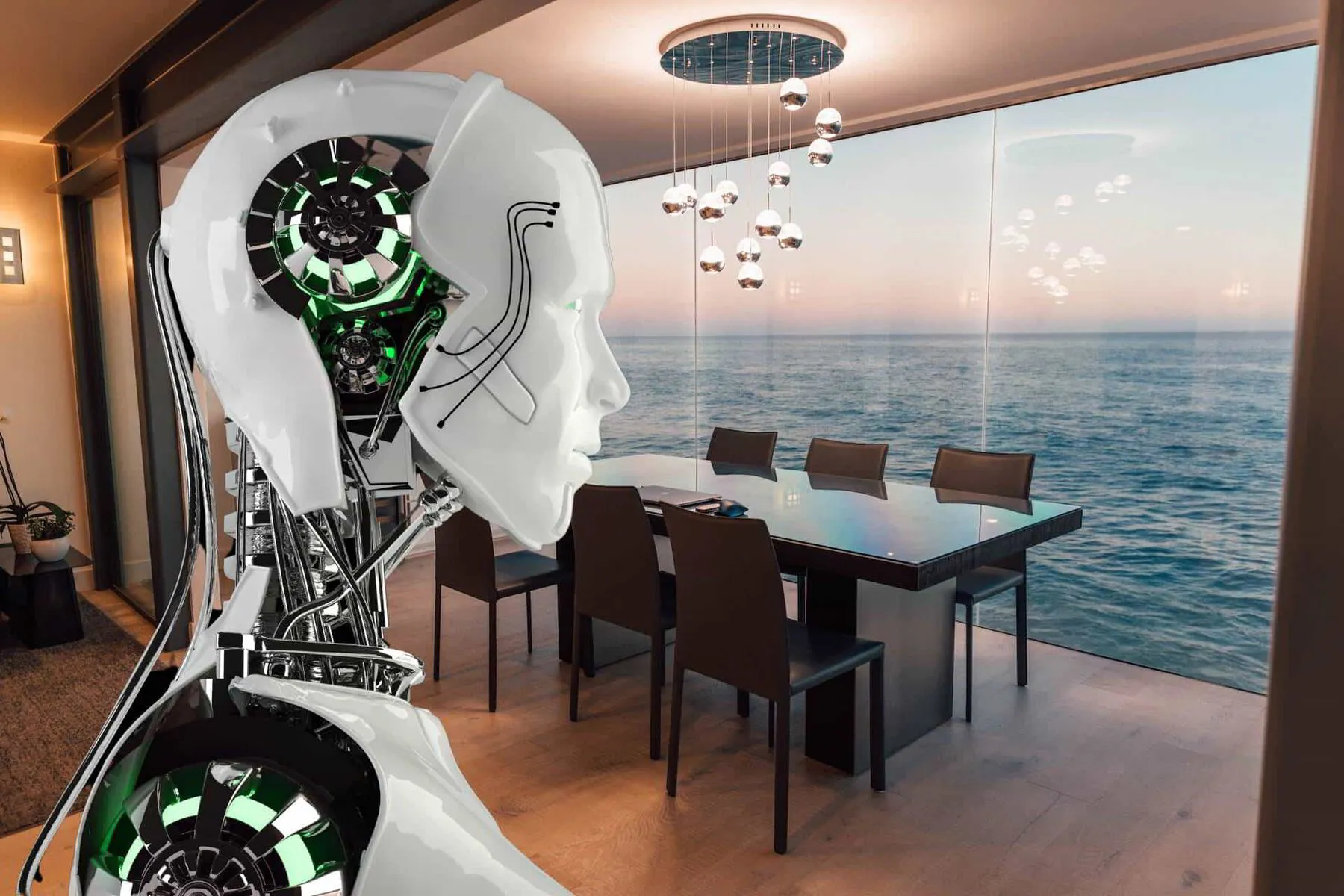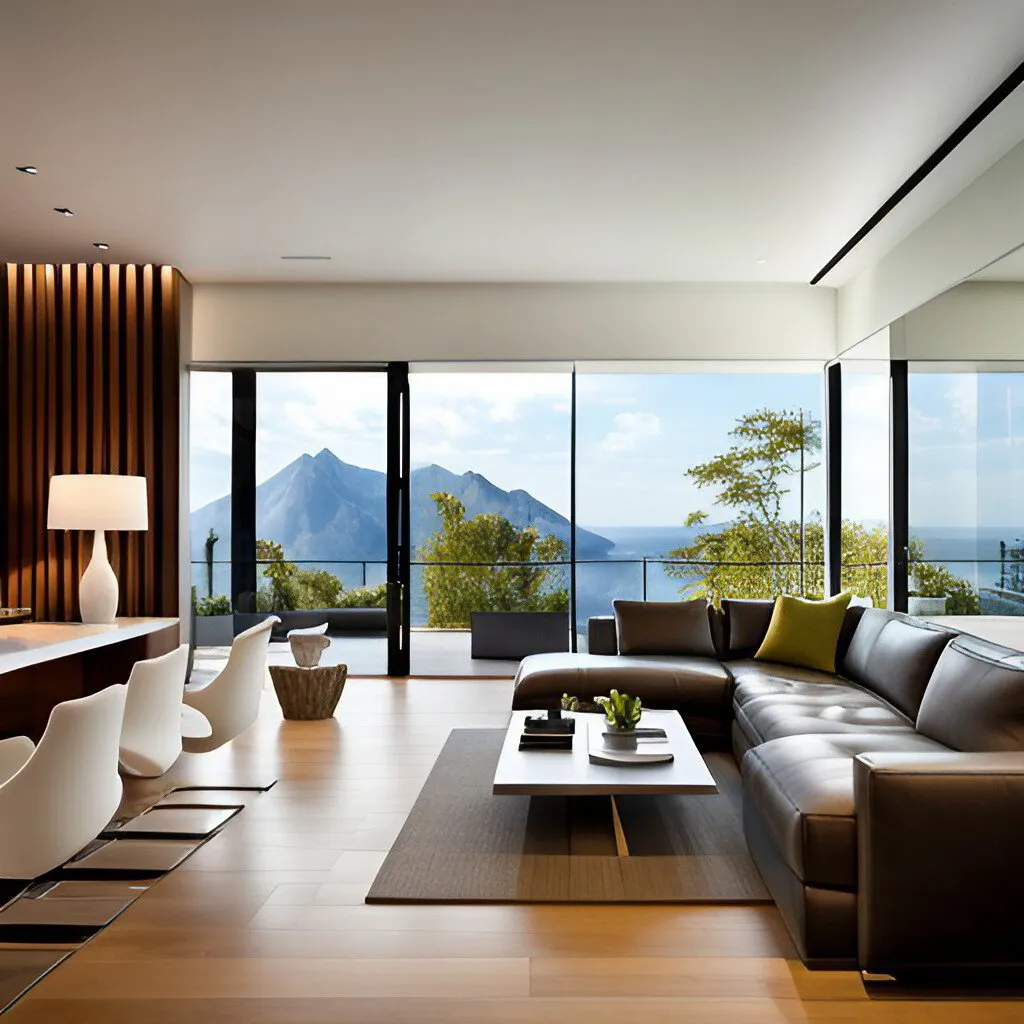In the dynamic realm of design, 2024 brings forth profound insights into the power of aesthetics in shaping our daily experiences.
Amidst all the changes and trends, the conversation seems to always revolve around two distinct styles - Traditional and Modern.
This exploration will take you through a comprehensive understanding of these design styles, their evolution, comparisons, and how technology poses as an influential factor, especially in modern design.
📘 Key Takeaways
- Traditional design emphasizes detail, ornamentation, and historical richness.
- Modern design values simplicity, clean lines, and uncluttered aesthetics.
- Both styles reflect cultural heritage, societal influences, and technological advancements.
- Technology plays a pivotal role in shaping modern design aesthetics.
- 2024 offers a blend of nostalgic traditional and sleek modern design elements.
Understanding Traditional and Modern Design Styles
Before we delve deeper into the nitty-gritty, it is essential to understand what exactly these two design styles signify. They don't merely reflect trends of the moment.
Instead, they encapsulate decades, sometimes even centuries, of cultural heritage, preferences, and technological advancements. Design styles have always been influenced by the society and culture in which they originate.
Traditional Style
Traditional design, for example, draws its roots from Western European décor of the 18th and 19th centuries. This particular style features elaborate moldings and embellishments, rich woods, plush (often floral) fabrics, and a largely ornate and detailed approach. It exudes a sense of comfort and familiarity, making it a timeless choice for many.
When it comes to traditional design, symmetry is another hallmark. The use of symmetrical patterns reflects order and attention to detail. This design style often incorporates heavy pieces of furniture, favoring form over function.
However, this does not mean that comfort and luxury are compromised in any way. The traditional design embraces warmth in terms of color palette and ambiance.
Speaking of color, traditional design usually leans towards the warm side, with earthy tones and darker shades dominating the palette. These colors create a cozy natural light, and inviting atmosphere for relaxing and entertaining guests.
Traditional layouts often use heavy pieces and tend to favor form over function, albeit without compromising on comfort and luxury.
📘 Related Reading:
- Peeking Into The Past: Unraveling The History Of Interior Design
- Transform Your Space: Essential Guide to Achieving Luxury Interior Design Elegance
Modern Style
On the other hand, the modern design movement emerged in the early 20th century as a response to industrialization. It values simplicity, functionality, and a clean, uncluttered aesthetic.
Modern design focuses on geometric forms, freedom of space, and a less is more approach. Unlike traditional design, modern design embraces a minimalist philosophy. It uses a variety of materials, including steel, glass, and plastics, besides natural elements.
The color scheme is usually neutral, with occasional pops of color to create visual interest.
Furnishings and décor in modern home design are minimalistic, practical, and uncomplicated, aiming for function above all else. This design style is all about creating a sense of openness and simplicity.
The use of clean lines and uncluttered spaces allows for a more organized and streamlined environment. This design style often incorporates contemporary furniture, and decor pieces that serve multiple purposes, maximizing functionality without sacrificing style.
Both design styles have their own unique characteristics and charm. While traditional design embraces elegance and intricate details, contemporary design focuses on simplicity and functionality.
Understanding the key characteristics of these design styles can help you make informed choices when it comes to decorating your space.
Historical Overview of Traditional Design
Traditional design, as we know, originated in Western Europe. It represented the grandeur and opulence of the period, typified by ornate carvings, rich fabrics, and refined craftsmanship.
Affordable only by the aristocracy initially, the style eventually trickled down to the masses with reproductions and adaptations, becoming a symbol of comfort and nostalgia.
As the centuries passed, traditional designs became even more detailed and complex. The influence of different regions and cultures began to shape the style, resulting in unique variations and regional adaptations.
For example, in the Baroque period, traditional design reached its peak with elaborate embellishments and intricate details. In contrast, the Rococo period introduced a more playful and whimsical approach, with organic shapes and delicate motifs. The Industrial Revolution brought about significant changes in traditional design.
The mass production of furniture and decorative items made traditional design more accessible to a wider audience. This democratization of style led to a blending of traditional elements with newer materials and manufacturing techniques.
The Victorian era, for instance, saw the introduction of machine-made furniture and wallpapers, which imitated the intricate details of handcrafted pieces.
Throughout history, traditional design has experienced a cyclical resurgence. In times of social and economic change, there is often a longing for the familiar and a desire to reconnect with the past.
This has led to contemporary reinterpretations of traditional design, where elements of the style are incorporated into modern interiors, creating a harmonious blend of old and new.
The Rise of Modern Design
Modern design, meanwhile, rose to prominence during the Industrial Revolution. It was influenced by the newfound possibilities that mechanized production brought. The contemporary style itself was revolutionary, challenging the prevailing ornate aesthetics and underscoring the beauty in simplicity and functionality.
As society became more urbanized and living spaces shrunk, modern design's minimalistic and space-maximization principles found growing favor. Architects and designers sought to create efficient and visually appealing environments that suited the needs of the modern lifestyle.
The Bauhaus movement, for example, emphasized the integration of art, craft, and technology, advocating for a holistic approach to design. With each passing decade, modern design continued to evolve and adapt.
The mid-century modern movement embraced new materials and technologies, such as molded plastic and plywood, to create sleek and organic forms. The postmodern era introduced modern architecture in a playful and eclectic style, combining elements from different periods and cultures.
Today, modern design continues to be relevant and adaptive to contemporary needs. It embraces sustainable practices, innovative materials, and cutting-edge technologies.
From more modern houses with minimalist Scandinavian interiors to futuristic smart homes, modern design continues to push boundaries and redefine our living spaces.
Comparing Traditional and Modern Design Styles
At first glance, these design style might seem like polar opposites. However, the comparison goes much deeper, revealing how these styles reflect changing perceptions about beauty, space, and functionality.
When examining the aesthetics of traditional architecture and design, one can't help but notice the emphasis on detail and ornamentation. Every piece tells a story, making the space feel warm, rich, and layered.
The traditional design creates a sense of history and grandeur, from intricately carved furniture to complex drapery treatments. On the flip side, modern design celebrates simplicity. The stress is on line, form, and color, rightly achieving a visually soothing and uncluttered aesthetic.
With clean lines and minimalistic furniture, modern spaces feel open and airy and have a composed sense of order.
📘 Related Reading: Modern Industrial Interior Design: 15 Design Ideas For That Old New Look!
Functionality vs Aesthetics
While traditional style may prioritize aesthetics, modern design puts functionality at the forefront. Many traditional design elements are more decorative than functional.
For instance, ornately carved furniture may be beautiful but not practical for everyday use. Similarly, complex drapery treatments may add elegance to a space, but they can also be cumbersome to operate.
In modern design, function dictates form.
Everything in the space has a purpose, and there is seldom room for purely decorative objects. This leads to more specification-driven and efficient designs in the modern aesthetic.
Furniture is designed with comfort and usability in mind, and every element serves a practical purpose. Traditional design heavily relies on wood and fabric when it comes to materials.
These natural materials showcase diversity in textures and patterns, adding warmth and richness to the space. From intricately carved wooden furniture to luxurious silk drapes, the traditional design embraces the beauty of natural elements.
On the other hand, modern design is all about experimentation.
It involves a wide spectrum of materials, from natural elements to man-made products like plastic, steel, and glass. This innovative approach adds variety and opens up limitless possibilities in designing spaces.
From sleek metal furniture to transparent acrylic accents, modern design pushes the boundaries of what is traditionally considered "appropriate" in interior design.
The comparison between design styles goes beyond surface-level differences. While traditional styles focus on intricate details and ornate aesthetics, modern design embraces simplicity and functionality.
Traditional design relies on wood and fabric to create warmth and richness, while modern design explores a wide range of materials to push the boundaries of design.
Both traditional and modern style have unique charm and appeal, reflecting society's changing perceptions and preferences.
The Influence of Technology on Modern Design
In our rapidly digitizing world, technology is reshaping everything, including design. As we delve further into the 21st century, the extent of its impact on design and modern architecture is substantial.
Technology has become an integral part of the design process, revolutionizing the way designers work and shaping the aesthetics of design.
From the role of digital tools in enhancing precision and reducing waste to the way technology is changing design aesthetics, the influence of technology on design is undeniable.
📘 Related Reading: Exploring the Latest Trends in Interior Design Technology
The Role of Digital Tools in Modern Design
Designers are increasingly adopting digital tools and software for visualization, prototyping, and production.
This not only saves time but also enhances precision and reduces waste. With the help of computer-aided design (CAD) software, designers can create intricate and complex designs that were once unimaginable.
Virtual and augmented reality tools have also revolutionized how designers convey ideas and how clients perceive them. Through virtual reality, designers can create immersive experiences, allowing clients to visualize and interact with their designs before they are even built.
This enhances the communication between interior designers and clients and helps identify and resolve potential issues early.
In addition, digital platforms have democratized design, making it more accessible for an aspiring interior designer and the general public. Online design communities and platforms provide a space for designers to showcase their work, collaborate with others, and gain inspiration.
This exchange of ideas results in continuous evolution and refinement of design styles.
How Technology is Changing Design Aesthetics
Technology is not just altering the tools of design but also influencing its aesthetics. It enables cutting-edge materials, intelligent systems, and automated processes that are vital to the modern aesthetic.
With the advent of advanced materials such as carbon fiber and 3D printing, designers can create lightweight and intricately designed structures that were once impossible.
Smart homes integrating technology with architecture and interior design are becoming increasingly popular. These homes are equipped with intelligent systems that allow homeowners to control various aspects of their living environment, such as lighting, temperature, and security, with just a few taps on their smartphones.
This seamless integration of technology into our living spaces enhances convenience and contributes to a sleek and minimalist home design and aesthetic.
Eco-friendly designs are also on the rise, thanks to technology. With growing awareness of environmental issues, designers are incorporating sustainable materials and energy-efficient systems into their designs.
From solar panels and rainwater harvesting systems to green roofs and passive cooling techniques, technology enables designers to create environmentally conscious designs that are both visually appealing and ecologically responsible.
Spatial innovation is another trend in modern design that is heavily influenced by technology. With the help of advanced software and algorithms, designers can optimize spatial layouts, making the most efficient use of available space.
This is particularly important in urban environments where space is limited.
By utilizing technology, designers can create innovative and functional spaces that meet users' needs while maximizing efficiency.Technology has had a profound impact on contemporary design. From adopting digital tools to transforming design aesthetics, technology continues to shape how designers work and create designs.
As technology advances, we can expect even more exciting and groundbreaking developments in the design world.
The Use of Traditional and Modern Designs
Looking at practical examples provides invaluable insights into how these aesthetics can be applied and interpreted in 2024.
Traditional Design in Contemporary Spaces
Despite the proliferating modern approach, traditional design continues to charm us in this day in age. Transitional style, a blend of traditional and modern designs, is gaining momentum.
It maintains the comfort of old-school design and modernity's minimalistic appeal.
Interior designers are also focusing on sustainable and humane aspects, using exclusively ethically sourced items in more traditional style layouts.
Modern Design in Contemporary Spaces
Modern design in 2024 is more daring than ever before. It fully embraces the use of smart technology and materials. We see a surge in modular designs and flexible spaces that adapt to our ever-changing needs.
The emphasis on sustainability continues to grow, with increased use of renewable materials and energy-efficient practices. Designs are becoming more inclusive, catering to varied demographics, including those with disabilities.
Final Thoughts
So, whether one swoons over the nostalgic pull of traditional designs or loves the sleek contours of modern aesthetics, the design landscape has something for everyone.
As we continue to shape our environments, these styles will continue evolving, reflecting our tastes, aspirations, and the zeitgeist of the times.
And if you want to learn more about interior design and its exciting possibilities for your home, don't forget to check out the rest of our interior design blog!
Thanks for reading!
📘 Related Reading: The 7 Elements of Interior Design in 2024
Lara Harding
Lara is a supporting author @ DIY Home Comfort. She's an experienced interior designer and decorator and a full-time mom. You can find out more about her here.













